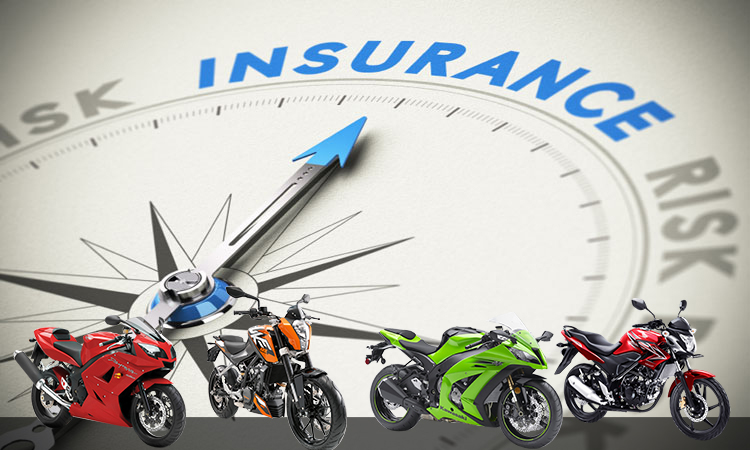Navigating the World of Bike Insurance: A Comprehensive Guide
In a world where cycling is gaining popularity, ensuring your investment and safety is paramount. Bike insurance has become an essential consideration for riders, offering peace of mind and financial protection against unforeseen events. From comprehensive coverage to specialized add-ons, understanding the intricacies of bike insurance can empower you to make informed decisions that safeguard your journey. This guide delves into the multifaceted world of bike insurance, providing a comprehensive overview of its various types, coverage options, factors influencing premiums, and the process of choosing the right provider. We explore essential considerations like safety measures, legal implications, and financial planning, equipping you with the knowledge to navigate the complexities of bike insurance with confidence. Types of Bike Insurance Choosing the right bike insurance policy can be a daunting task, as there are various options available, each with its own set of benefits and limitations. Understanding the different types of bike insurance policies can help you make an informed decision and ensure adequate coverage for your needs. Types of Bike Insurance Policies The most common types of bike insurance policies include: Comprehensive Insurance: This is the most comprehensive type of bike insurance, offering coverage for a wide range of risks, including theft, damage, and accidents. It provides financial protection against both third-party liabilities and own-damage losses. Third-Party Insurance: This is the most basic type of bike insurance, covering only third-party liabilities. It provides financial protection in case of an accident where you are at fault and cause damage to another person’s property or injury to another person. Standalone Coverages: These are optional coverages that can be added to a comprehensive or third-party policy to enhance protection. Some common standalone coverages include: Personal Accident Cover: This provides financial assistance in case of accidental death or disability of the insured rider. Zero Depreciation Cover: This covers the full cost of replacement parts without considering depreciation, making it particularly beneficial for new bikes. Engine Protection Cover: This protects the engine from damage caused by various factors like water ingress or oil leakage. Roadside Assistance Cover: This provides assistance in case of breakdowns or accidents, including towing, repair, and fuel delivery. Comparison of Bike Insurance Policies The following table summarizes the key features, benefits, and limitations of different types of bike insurance policies: Type of Policy Key Features Benefits Limitations Comprehensive Covers both own-damage and third-party liabilities Provides comprehensive protection against a wide range of risks Higher premium compared to other policies Third-Party Covers only third-party liabilities Lower premium compared to comprehensive policies Limited coverage, does not cover own-damage losses Standalone Coverages Optional coverages that can be added to existing policies Enhance protection by providing coverage for specific risks May increase the premium depending on the type of coverage Decision-Making Process for Choosing the Right Insurance The following flowchart illustrates the decision-making process for choosing the right type of bike insurance: [Flowchart illustrating the decision-making process for choosing the right type of insurance. The flowchart should start with the question ”What is your budget?”. If the budget is high, then the flowchart should lead to the option ”Comprehensive Insurance”. If the budget is low, then the flowchart should lead to the option ”Third-Party Insurance”. From both options, the flowchart should lead to the question ”Do you want additional coverage?”. If the answer is yes, then the flowchart should lead to the option ”Standalone Coverages”. If the answer is no, then the flowchart should lead to the end of the process.] Key Coverage Options Bike insurance policies typically offer a range of coverage options to safeguard your investment and protect you from financial liabilities. These options provide financial protection against various risks associated with owning and riding a bike. Essential Coverage Options The core coverage options included in most bike insurance policies provide essential protection for both the bike and the rider. Damage to the Bike: This covers repairs or replacement costs for damage to your bike due to accidents, natural disasters, theft, or vandalism. This coverage ensures you can restore your bike to its pre-loss condition. Third-Party Liability: This covers legal and financial liabilities arising from accidents involving third parties, including injuries, property damage, or death. It protects you from potential financial burdens and legal consequences. Personal Accident Cover: This provides financial compensation for medical expenses, disability, or death in case of an accident involving the insured rider. It offers peace of mind and financial support during a difficult time. Theft: This covers the loss of your bike due to theft or robbery. It ensures you receive compensation to replace your stolen bike. Optional Add-ons In addition to the essential coverage options, bike insurance policies often offer optional add-ons that provide enhanced protection and peace of mind. Roadside Assistance: This provides assistance in case of breakdowns or accidents, including towing, repair services, and emergency support. It ensures you receive help when you need it most. … Read more

